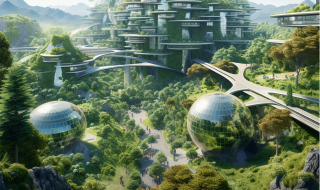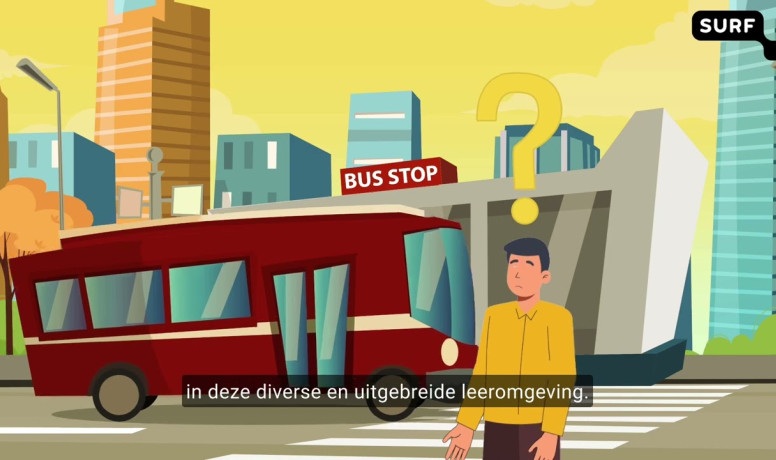The Transformation Scenario
The 'Transformation' scenario
Radically different, yet realistic
It is 2040. Aisha wakes up and grabs her VR glasses, which she controls with her voice. Her AI coach suggests a schedule based on Aisha's interests. First, she participates in an interactive VR simulation on sustainable urban development, along with students from a variety of disciplines, spread across the country. A lecturer guides them and encourages them to think out-of-the-box. Afterwards, Aisha goes to the campus, where not only teaching takes place but also companies are located. Aisha takes a master class from a renowned artist. Over lunch, she exchanges ideas in the central hub with fellow students and experts from professional practice. Knowledge sharing and co-creation are central. In the library, she works on a real-life assignment for a client, recording her progress in her flexible digital portfolio. The campus feels like a second home, where boundaries blur and anything seems possible.
Explainer Transformation scenario
In 2040, education is radically flexibilised and personalised. Students will no longer sit passively in lecture-room desks anywhere, but will be active participants in their own customised learning path in all sectors. Teachers act as coaches, guiding them through a constantly available knowledge landscape. Artificial intelligence has become indispensable, creating personalised instruction in an instant. Traditional educational structures have been broken; MBO, HBO and WO are integrated and work closely with government and industry. As a result, educational institutions have become regional innovation hubs. Technological development has transformed the campus, both physically and virtually, into lively meeting places for everyone. It is a place for co-creation and connection. Students of all ages direct their own learning journey.
- Education is radically flexible and personalised.
- Students steer and direct their own learning path.
- Teachers coach and guide, AI supports.
- Creativity and innovation are crucial.
- The campus is a hub for innovation.
- Interdisciplinary collaboration is the norm.
- The campus, physical and virtual, is infused with technology.
- Theory and practice are no longer separate.
- The campus has become an ecosystem for learning.
- Sustainability and inclusiveness are (visible) core values.
To better understand this scenario, it helps to think through its features to extremes. When we do this, we arrive at the following aspects:
Brain-interface learning chips: A chip in your brain makes traditional learning completely superfluous.
Education without institutions: The learning environment is integrated into society.
Inexhaustible source of energy: Hardly a brake on technological developments.
Universal basic income: Access to education increased.
Hyper-immersive extended reality (XR): All physical and digital learning experiences merged into a seamless, dynamic XR environment.
Automatically customised learning environments: Learning environments are automatically adapted to individual needs in real-time.
Unforeseen and disruptive changes that could greatly affect this scenario:
Gamification of reality: Every activity becomes a potential learning experience.
Thought-driven learning: Mind-machine interfaces transform education.
AI as complete teacher replacement: Requires revision of labour laws, accreditation and didactics.
Always-on learning platforms: Redefining what counts as 'teaching' and 'learning time'.
Free movement of people and goods within UN framework: Globalisation takes on a different meaning.

